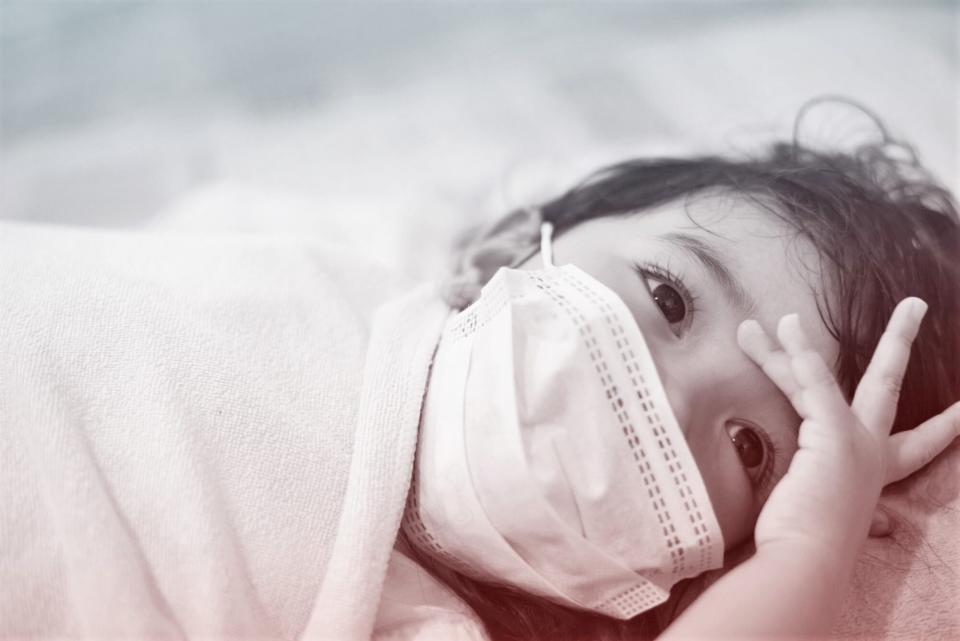5 Things Parents Need to Know About Multisystem Inflammatory Syndrome in Children

At the start of the pandemic, news reports claimed that the coronavirus mostly spared children. Now we know that COVID-19 can present with serious symptoms in kids (although this remains rare). Some children under 21 years old have also developed a strange illness dubbed multisystem inflammatory syndrome in children (MIS-C).
First reported on April 26, 2020, in the United Kingdom, MIS-C resembles toxic shock syndrome and the rare Kawasaki disease. The latest reports from the Centers for Disease Control and Prevention (CDC), published on June 28, 2021, cite a total of 4,196 MIS-C cases, with additional cases under investigation. Thirty-seven children have died from the syndrome.
MIS-C has been recorded in 49 states, New York City, Puerto Rico, and Washington, DC—and it most commonly affects those between the ages of 1 and 14 years. What's more, according to the CDC, "62 percent of the reported patients with race/ethnicity information available occurred in children who are Hispanic or Latino (1,246 cases) or Black, Non-Hispanic (1,175 cases).
Here's what we know so far about the symptoms of multisystem inflammatory syndrome in children, including the latest guidelines from the CDC to protect kids.

Narisara Nami/Getty Images
Children with multisystem inflammatory syndrome are testing positive for COVID-19.
The CDC reports that 99 percent of children with multisystem inflammatory syndrome tested positive for COVID-19. The remaining kids had close contact with someone diagnosed with the coronavirus. Experts believe that the illness usually appears within four weeks of COVID-19 exposure, and it may be caused by an over-exaggeration of the immune system.
Symptoms of MIS-C are different from COVID-19.
Experts are still learning about MIS-C, so the full range of symptoms isn't yet understood. However, the CDC previously released the following case definition: someone younger than 21 presenting with "fever, laboratory evidence of inflammation, and evidence of clinically severe illness requiring hospitalization, with multisystem organ involvement (cardiac, renal, respiratory, hematologic, gastrointestinal, dermatologic or neurological)." The patient should also have no alternative plausible diagnoses and received a positive PCR, serology, or antigen COVID-19 test within the 4 weeks prior to symptom onset.
Other common MIS-C symptoms include fever, vomiting, diarrhea, abdominal pain, extreme fatigue, bloodshot eyes, rash, and neck pain. In severe cases, children can experience breathing difficulties, confusion, inability to wake, pressure in the chest, and bluish lips or face, says the CDC. Seek medical care immediately if you notice these symptoms.
Note that MIS-C most often occurs in those less than 21 years old, but there have also been several reports of multisystem inflammatory syndrome in adults (MIS-A).
MIS-C can sometimes be severe.
Most patients fully recover from MIS-C, but at least 37 children died from it so far. Others have suffered severe complications. "Most children who become ill with MIS-C will need to be treated in the hospital," says the CDC. "Some will need to be treated in the pediatric intensive care unit (ICU)." Patients with MIS-C have also required cardiac and/or respiratory support, says Demetre C. Daskalakis, M.D., MPH, deputy commissioner of the New York City Health Department's Division of Disease Control.
MIS-C is most likely not a form of Kawasaki Disease.
Kawasaki disease is a rare condition that causes inflammation (swelling and redness) in the blood vessels. It mainly affects infants and young children, says Michael Chang, M.D., an infectious disease pediatrician at McGovern Medical School at UTHealth in Houston. Doctors believe it's caused by an immune system overreaction to an unknown trigger.
So is MIS-C a form of Kawasaki disease? Experts say probably not. Most doctors believe that MIS-C is actually a separate condition caused by an abnormal immune response to COVID-19. Dr. Chang points out one major reason: Kawaksaki disease shares similar symptoms to MIS-C, but there are also large differences. What's more, some adults are also experiencing an immune system overreaction to COVID-19, he says.
According to Daniel J. Penny, M.D., chief of cardiology at Texas Children's Hospital, "What's becoming apparent is that the onset of this Kawasaki-like syndrome in a community appears to lag behind the appearance of COVID-19, which supports the idea that it is not the infection itself, but rather the body's response to the infection." He says that the incidence of Kawasaki disease in Japan, which usually has the highest number of cases, does not appear to have increased during the coronavirus pandemic. "This could potentially mean the precise genetic mechanisms which predispose to usual Kawasaki disease may differ from those for COVID-associated Kawasaki disease," he says.
If your child has a persistent high fever, see a doctor.
Does your child have persistent fever, skin rash, vomiting, or other symptoms related to MIS-C? If they're under 21, Dr. Daskalakis says to report it to the health department immediately. Your child's doctor will refer them to a "specialist in pediatric infectious disease, rheumatology, and/or critical care," says Dr. Daskalakis. Early diagnosis can ward off severe complications like organ damage.
"If your child has a high fever that has gone on for more than three to five days without reason, you need to have your child assessed," emphasizes Lolita McDavid, M.D., professor of general pediatrics and adolescent medicine at Case Western Reserve University. Even if it's not multisystem inflammatory syndrome, "it could be strep throat or something else that needs treatment," she adds.

